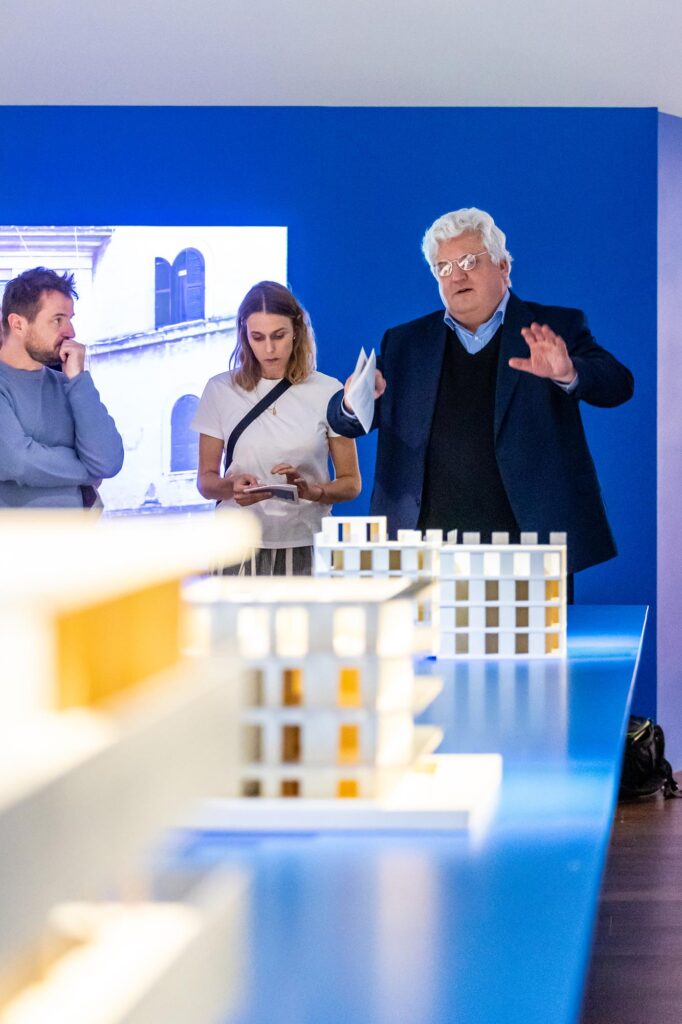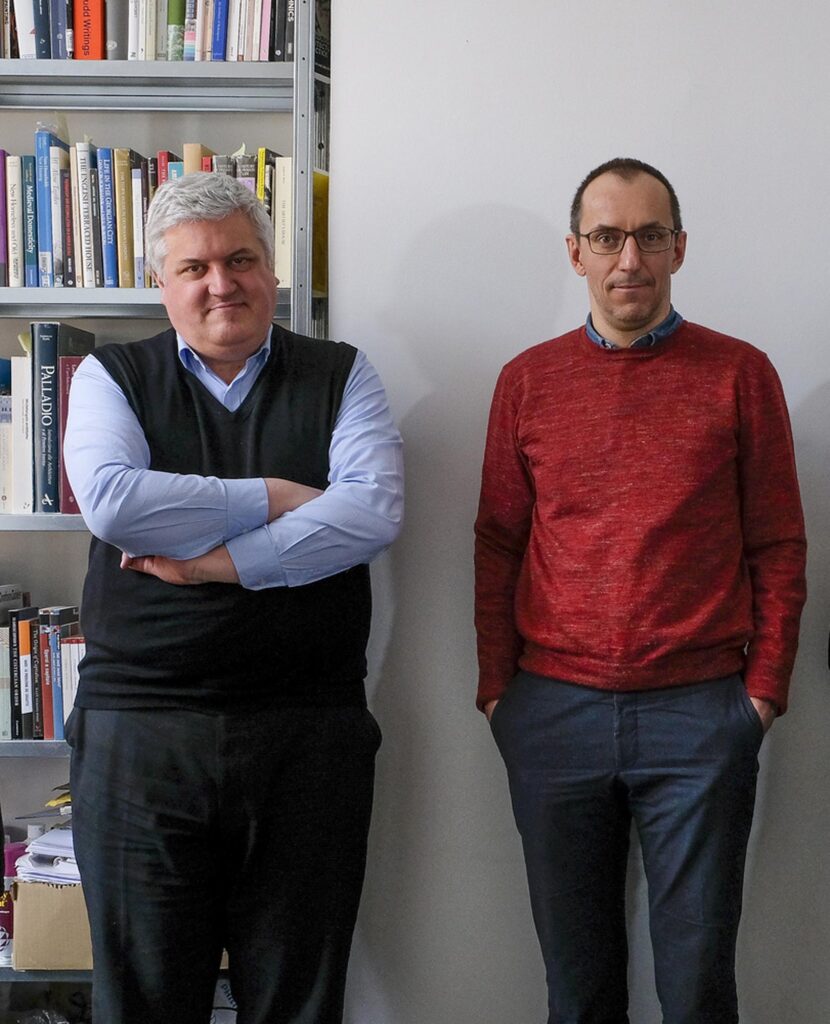The exhibition Dogma: Urban Villa, curated by the Italian firm lead by Pier Vittorio Aureli and Martino Tattara, makes the case for more cooperative and collective housing. Dogma and the VAi both hope that it will kick-start a dialogue around better urban densification and the creation of diverse, collective and affordable housing units.

How can we live communally and make housing in an urban environment more affordable and attractive? The renowned architects see a solution in a time-honoured building type: the urban villa. The Flanders Architecture Institute (VAi) has invited the architects to reveal their research in an exhibition.
Practical info
‘Dogma: Urban Villa’
October 4 – February 9, 2025
Flanders Architecture Institute DE SINGEL
Desguinlei 25, 2018 Antwerpen
Belgium
This is Dogma’s second exhibition with the Flanders Architecture Institute for DE SINGEL. On this occasion, they present their work alongside historical and international references in the main exhibition space. The common thread is the urban villa typology, which scarcely finds a place in Belgium’s architectural history. With the help of forty case studies, Dogma highlight the qualities of this building type and reveal how it can solve the housing issues in contemporary cities. Martino Tattara (co-founder, Dogma): “We firmly believe that a reinterpretation of the urban villa can lead to a more social and affordable housing policy.”


The architecture firm Dogma is known for its research into the evolution of housing in a rapidly changing society. In this exhibition, Brussels-based office Dogma reclaims the urban villa as the best form for a housing type in which many functions are socialized among residents. The urban villa is a midsize multifamily house which since the 1800s has become a staple housing type in many cities across Europe and beyond. Its distinctive features are its density and speculative nature. The urban villa emerged to combine aspirations to suburban living with the pressure of land costs. Despite its rather controversial reputation due to its commercial nature, the urban villa has been a success, also on account of its undisputable appeal to residents of all kinds.
The exhibition is structured in two parts. Part one shows the history of the urban villa as a specific typology; from townhouse to multi-family dwelling in cities such as Lausanne, Berlin and Rome. The second part presents a series of design proposals by Dogma. Four projects approach the urban villa as a social and cooperative home, while another project uses the urban villa as a collective and affordable housing model.
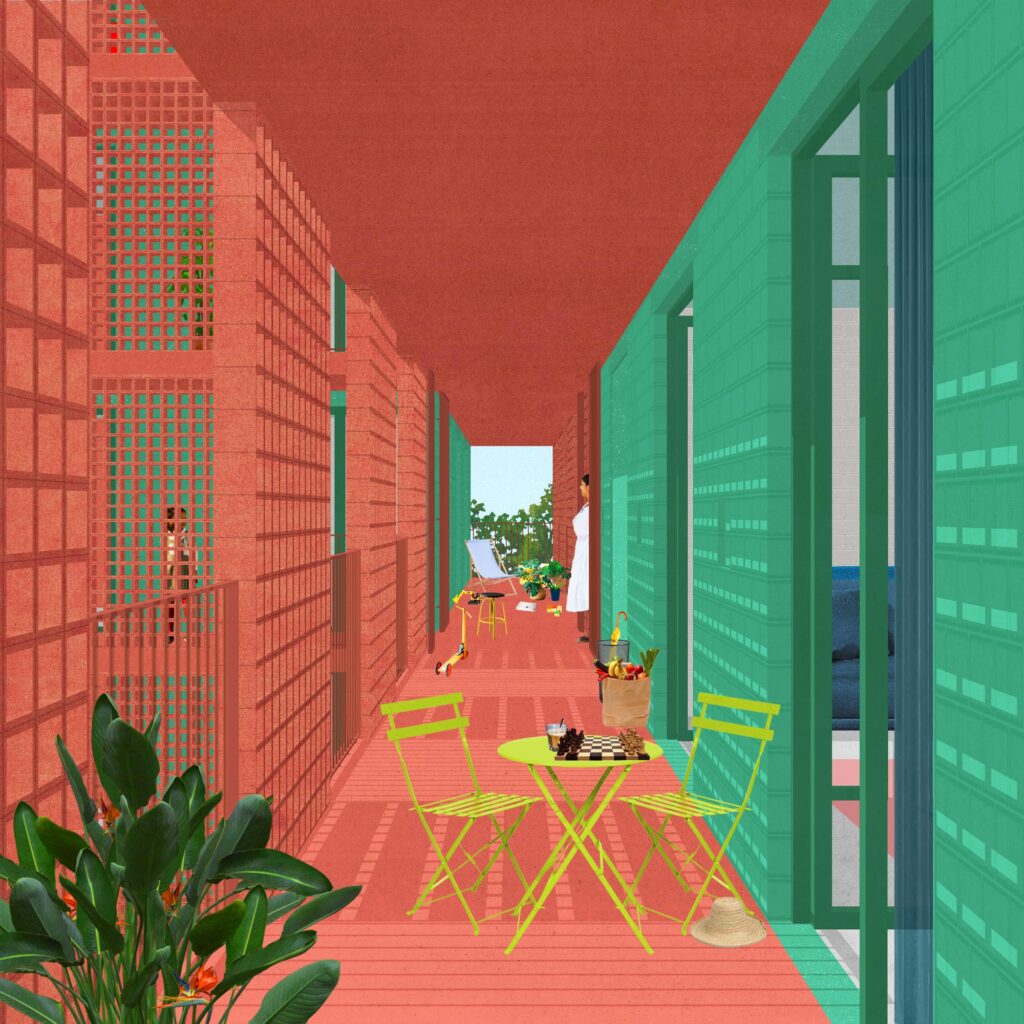
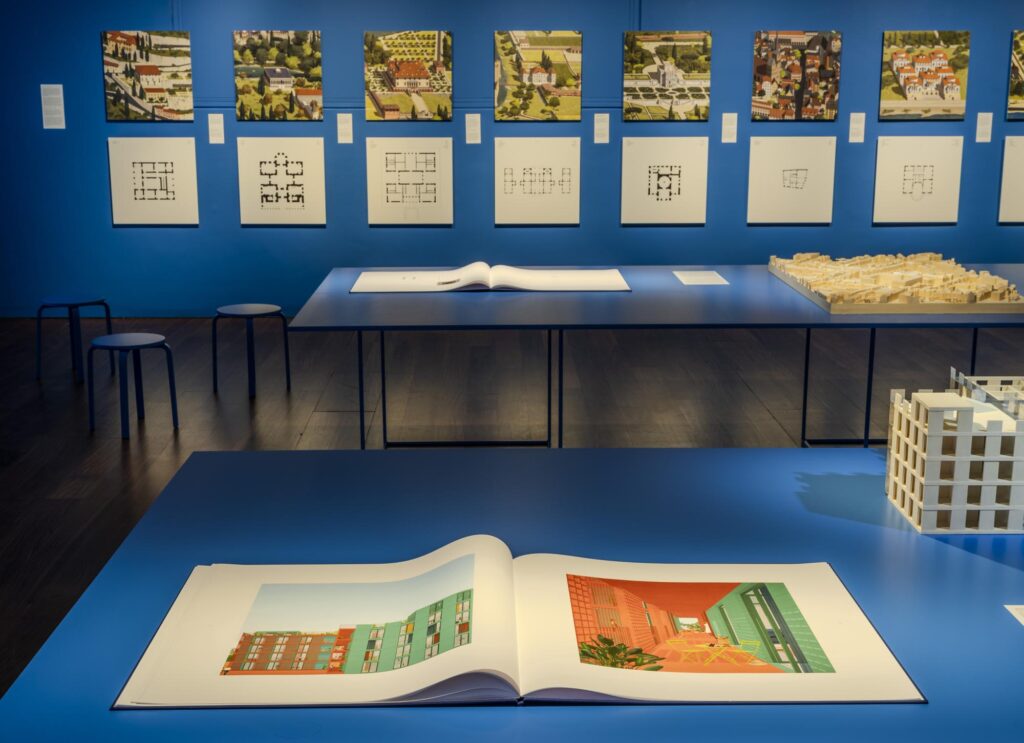
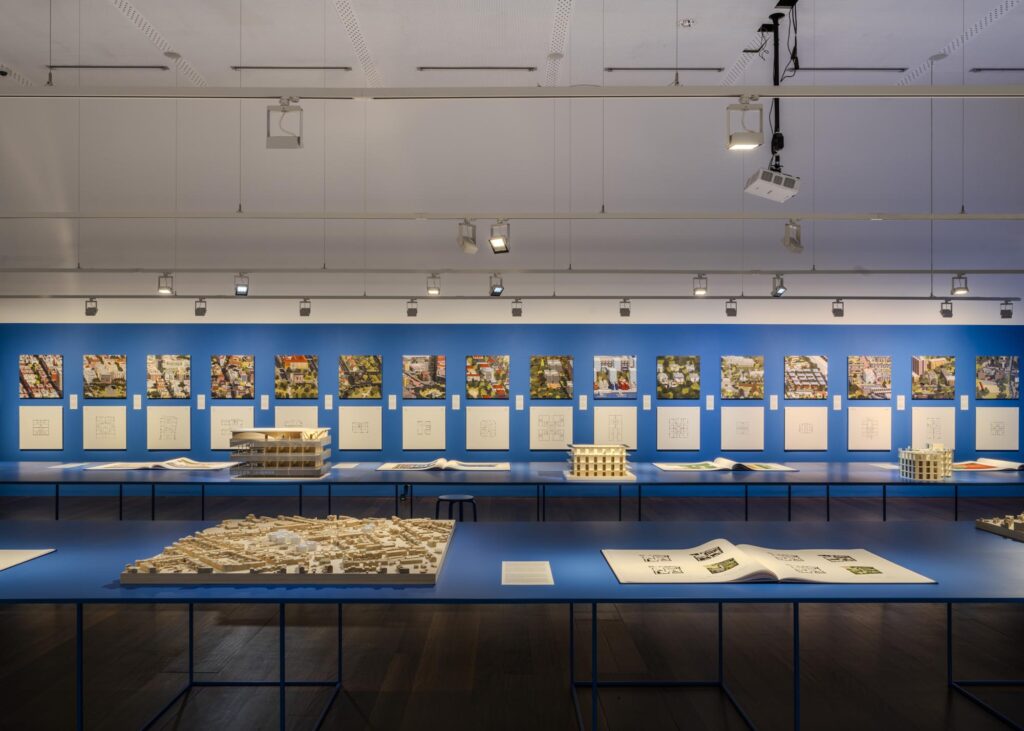

The exhibition aims to trace the historical evolution of the urban villa and to offer a design reinterpretation of this type as the best form of affordable and cooperative housing. It further develops a research presented in 1977 by Oswald Mathias Ungers. The German architect focused on the possibility of using the urban villa as the best type to preserve the integrity of the urban fabric while providing a form of dwelling comparable to suburban houses. The urban villa is midsize, neither too big like a city block, nor too small like a single-family house. Ungers noted that this made the urban villa optimal for cooperative housing and for supporting a mix of functions (residence, office and retail, for example).


Dogma
Since its establishment by Pier Vittorio Aureli and Martino Tattara in 2002, Dogma has had a huge impact on the architectural world. Their work focuses on large-scale urban planning projects and the complex interplay between theory and practice. In addition to their design activities, Dogma’s architects engage in research, writing and teaching. Tattara is affiliated with the Faculty of Architecture at TU Darmstadt, while Aureli teaches at the Ecole Polytechnique Fédérale de Lausanne (EPFL). Their research by design focuses on the transformation of domestic spaces. Dogma’s international exhibitions include the Design Museum London (2018), Tallinn Architectural Biennale (2014), HKW Berlin (2015), Biennale di Venezia (2016), Chicago Architectural Biennale (2017) and the Flanders Architecture Institute (2019). In early 2024, the firm received the RIBA Charles Jencks Award, issued by the prestigious Royal Institute of British Architects (RIBA).

